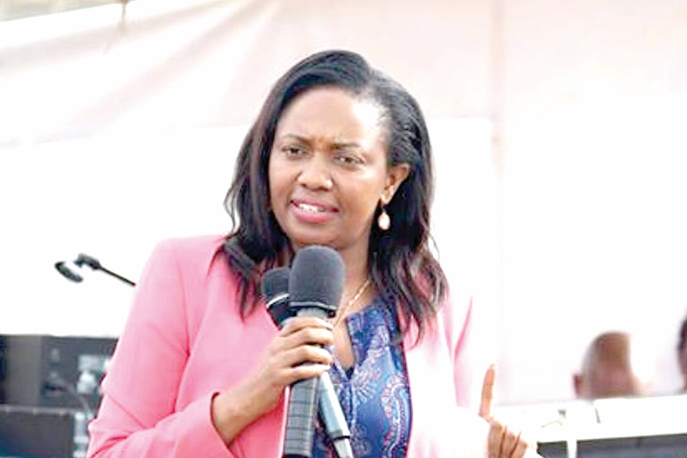Why Kenya must strike right balance in national AI strategy

As artificial intelligence (AI) transforms industries and economies worldwide, the challenge for policymakers is to create regulatory frameworks that protect public interests without stifling innovation. In Kenya, a country globally recognised as the “Silicon Savannah,” this balancing act is critical.
With ongoing conversations on developing a National AI Strategy, the government is now at the forefront of shaping AI regulation, informed by its tech success story — M-Pesa.
The question is, how can Kenya implement a regulatory framework that fosters growth and innovation while ensuring ethical AI practices? A robust regulatory environment is not inherently antithetical to innovation. In fact, when well-crafted, regulation can catalyse innovation by providing clear boundaries and ensuring consumer protection, security, and fairness.
For Kenya, globally recognised as a hub of technological advancement in Africa, adopting an enabling approach to AI regulation is vital. Regulation should serve as a guiding framework that promotes ethical AI development while encouraging investment and technological creativity. Kenya has already demonstrated its capacity for regulatory foresight. Take M-Pesa, the mobile money platform launched by Safaricom in 2007, as a prime example. At the time, many feared that mobile money would disrupt the financial sector. However, CBK adopted a progressive stance. Rather than introducing heavy-handed laws that would curtail innovation, the regulator allowed M-Pesa to flourish under a flexible regulatory framework that prioritised consumer protection without restricting technological advances. The result? M-Pesa has become a global sensation, extending financial inclusion to millions of unbanked Kenyans.
M-Pesa’s regulatory journey offers invaluable lessons for the AI landscape. When Safaricom launched the service, CBK recognised the potential risks but opted for a regulatory sandbox approach.
This allowed the platform to scale while regulators monitored its development and adapted rules to mitigate emerging risks. Over the years, M-Pesa has revolutionized financial services, becoming a case study of how innovation and regulation can coexist.
The AI sector in Kenya could benefit from a similar approach. Rather than imposing rigid regulations that might stifle creativity, Kenya’s approach to AI should incorporate flexible and adaptive policies.
Regulatory sandboxes—already a successful model in fintech—could be extended to AI development, enabling innovators to test solutions in a controlled environment. This model would allow for real-time learning, risk management, and the evolution of AI policies that remain responsive to the fast-changing technological landscape. For a developing country like Kenya, the stakes in regulating AI are even higher. AI offers the potential to address challenges in key sectors such as healthcare, agriculture, and education, where access and efficiency are critical to national development goals.
The World Economic Forum projects that AI could add up to $15.7 trillion to the global economy by 2030, with developing countries poised to benefit significantly. However, the risk is that stringent or poorly designed regulations could prevent Kenya from realising these benefits. As noted by AI expert Andrew Ng, “AI is the new electricity. Just as electricity transformed industries over the last century, AI will likely do the same in the future.”
But just as the electricity grid had to be regulated to ensure widespread access, safety, and reliability, so too must AI systems be guided by thoughtful regulation. For Kenya, the goal should be to use regulation as a tool for ensuring that AI technologies are inclusive, equitable, and accountable, while also incentivizing innovation and investment.
Kenya is already making strides in AI adoption. According to the 2023 AI Readiness Index, Kenya ranks 84th globally, the highest in East Africa. The Index measures countries’ ability to implement AI across sectors and the economy.
With its relatively advanced digital infrastructure and vibrant tech ecosystem, Kenya is well-positioned to leverage AI for development. However, the Index also highlights gaps in governance, skills, and data infrastructure, all of which are essential for maximising AI’s potential.
Kenya’s National AI Strategy must, therefore, prioritise capacity building in digital skills and data infrastructure while fostering an ecosystem where AI innovators can thrive. In doing so, Kenya can harness AI to address critical development challenges—provided the regulatory environment remains supportive.
Kenya is not alone in grappling with the question of how to regulate AI without stifling innovation. Countries like the United States and China have taken varied approaches, often favouring market-driven growth with minimal regulatory interference. The European Union, by contrast, is pursuing more stringent regulations with the proposed AI Act, which focuses on risk-based frameworks to ensure AI systems are safe and transparent. For Kenya, the right balance likely lies somewhere in between. The regulatory approach should consider Kenya’s unique challenges, including its developing economy, tech ecosystem, and societal needs.
-The writer is a lawyer and researcher in law and public policy themes in Kenya and the EAC region-













